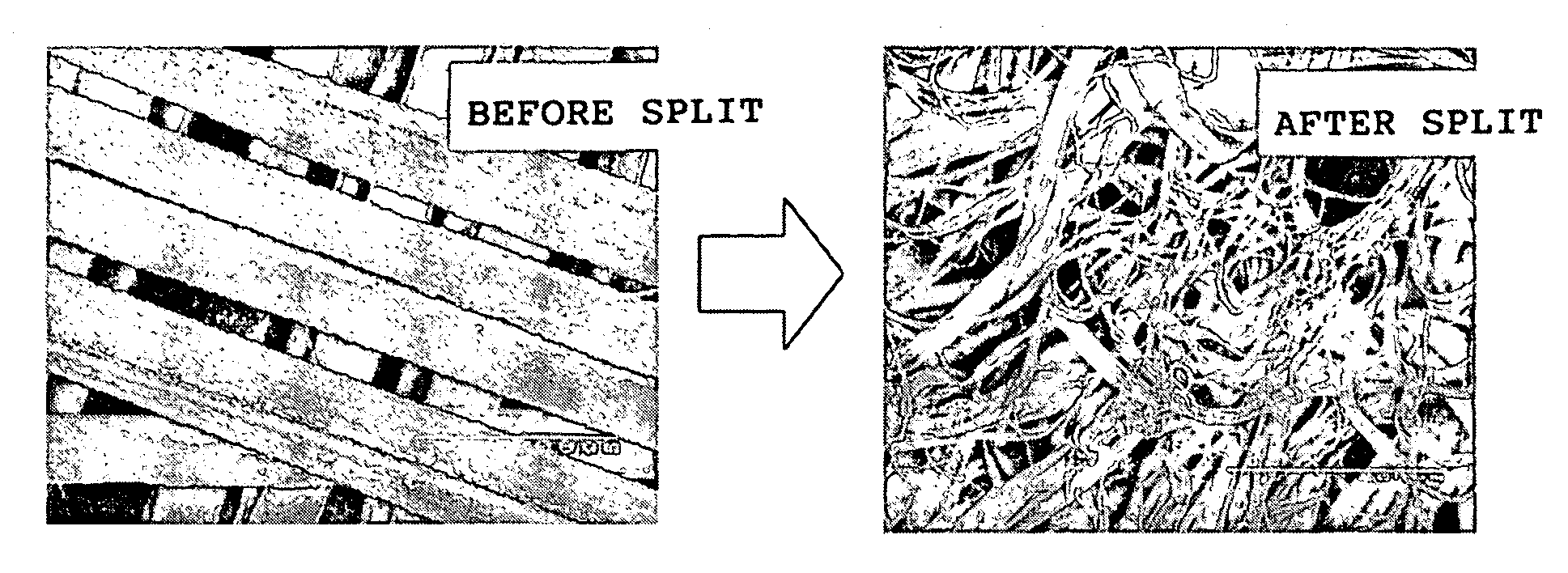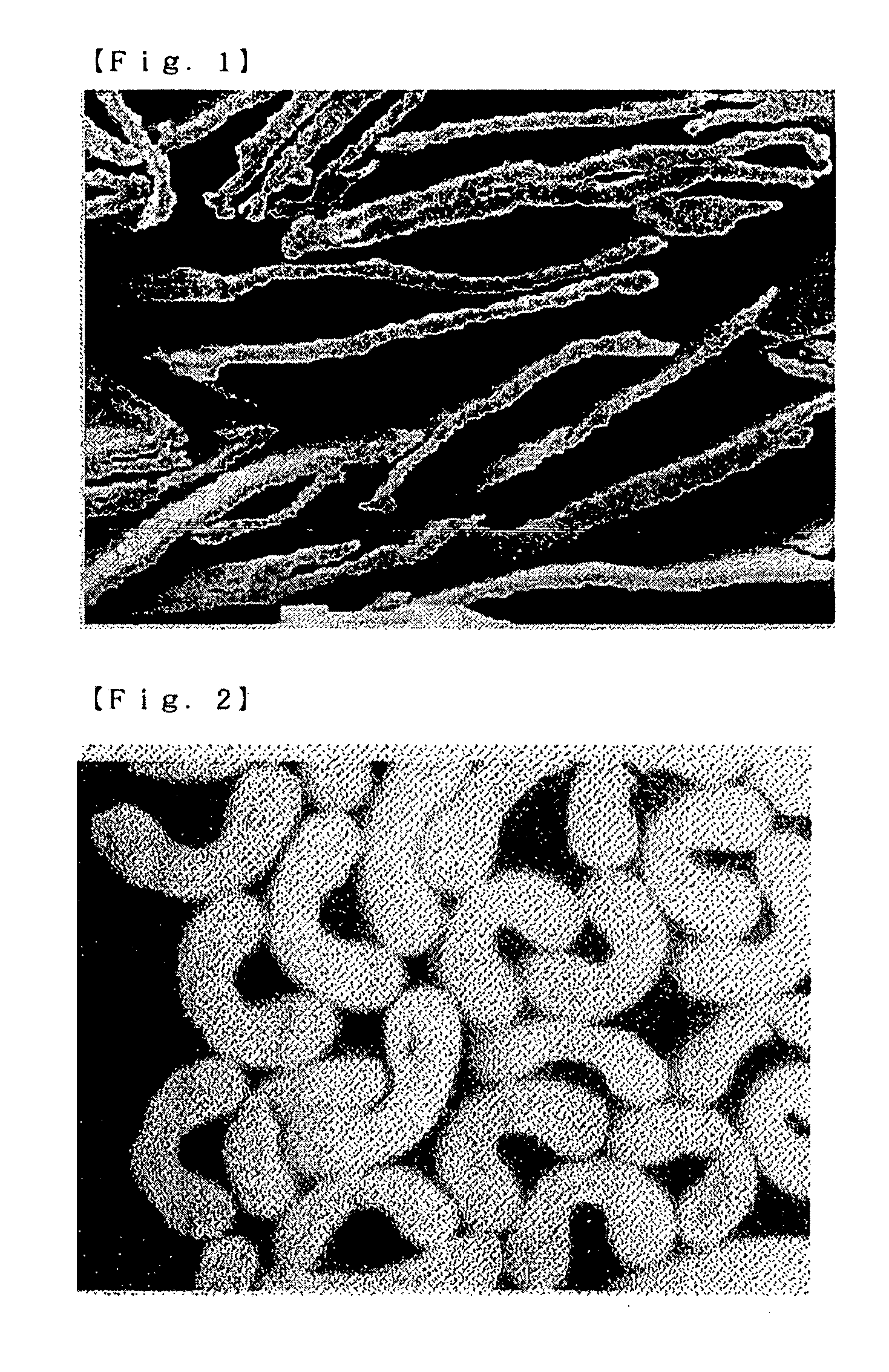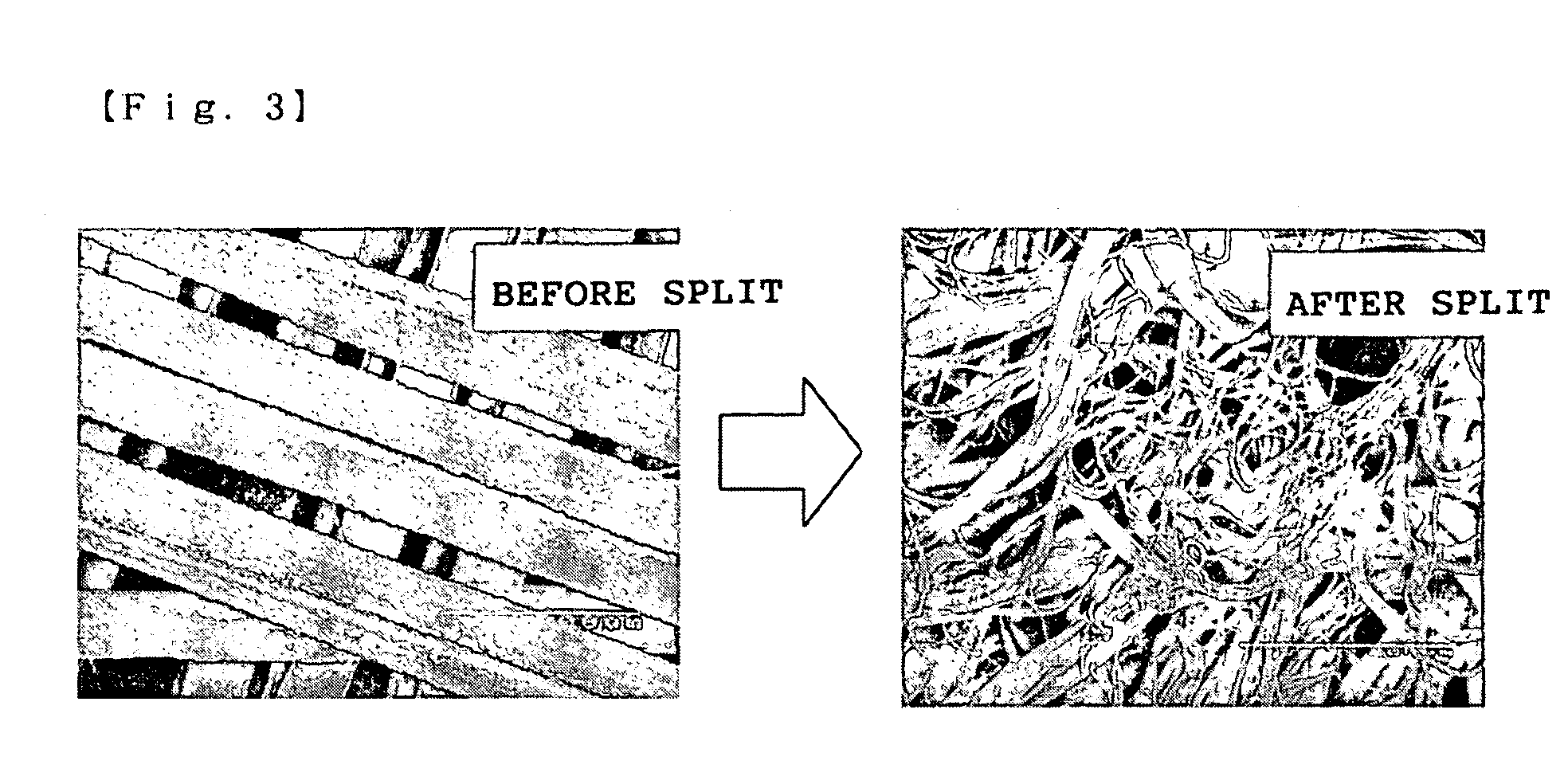Polyvinyl alcohol fibers, and nonwoven fabric comprising them
- Summary
- Abstract
- Description
- Claims
- Application Information
AI Technical Summary
Benefits of technology
Problems solved by technology
Method used
Image
Examples
example 1
[0060](1) An aqueous spinning solution of 15% by mass of PVA resin having a mean degree of polymerization of 1700 and a degree of saponification of 99.9 mol % with 0.3% by mass of boric acid was spun out into a coagulation bath of saturated sodium sulfate having a controlled pH of at least 12, through a spinneret with 4000 rectangular slit orifices of 30 μcm (length)×450 μm (width), and the resulting fibers were wound up around a first roller and drawn in wet by 4 times. Then, these were dried at 130° C., and then dried under dry heat at 230° C. by 3 times to give flattened PVA fibers having a single fiber fineness of 1.5 dtex and having D and L / D as in Table 1. Thus obtained, the flattened PVA fibers were acetalized in an aqueous solution of 5% by mass of formaldehyde with 10% by mass of sulfuric acid, for 60 minutes.
[0061](2) The PVA fibers obtained in the above (1) were mechanically crimped, then cut into 51-mm pieces. These were carded to form a web. The web was processed in a w...
example 2
[0062](1) An aqueous spinning solution of 15% by mass of PVA resin having a mean degree of polymerization of 1700 and a degree of saponification of 99.9 mol % was spun out into a coagulation bath of saturated sodium sulfate, through a spinneret with 4000 rectangular slit orifices of 30 μm (length)×600 μm (width), and the resulting fibers were wound up around a first roller and drawn in wet by 4 times. Then, these were dried at 130° C., and then dried under dry heat at 230° C. by 2 times to give flattened PVA fibers having a single fiber fineness of 2.0 dtex and having D and L / D as in Table 1 in the same manner as in Example 1. Thus obtained, the flattened PVA fibers were actualized in the same manner as in Example 1.
[0063](2) The PVA fibers obtained in the above (1) were cut into 10-mm pieces, and 90 parts by mass of the thus-cut fibers were mixed with 10 parts by mass of Kuraray's vinylon binder fibers VPW101, and sheeted in wet. The resulting sheet was processed in a water-jet dev...
example 3
[0064](1) An aqueous spinning solution of 15% by mass of PVA resin having a mean degree of polymerization of 1700 and a degree of saponification of 99.9 mol % with 0.8% by mass of a layered compound (Corp Chemical's synthetic mica, SIME-88) was spun out into a coagulation bath of saturated sodium sulfate, through a spinneret with 4000 rectangular slit orifices of 30 μm (length)×150 μm (width), and the resulting fibers were wound up around a first roller and drawn in wet by 4 times. Then, these were dried at 130° C., and then dried under dry heat at 230° C. by 2 times to give flattened PVA fibers having a single fiber fineness of 2.0 dtex and having D and L / D as in Table 1. Thus obtained, the flattened PVA fibers were acetalized in the same manner as in Example 1.
[0065](2) The PVA fibers obtained in the above (1) were formed into a dry-process nonwoven fabric in the same manner as in Example 1. In the thus-obtained nonwoven fabric, the PVA fibers were well fibrillated after the water...
PUM
| Property | Measurement | Unit |
|---|---|---|
| Length | aaaaa | aaaaa |
| Thickness | aaaaa | aaaaa |
| Percent by mass | aaaaa | aaaaa |
Abstract
Description
Claims
Application Information
 Login to View More
Login to View More - R&D
- Intellectual Property
- Life Sciences
- Materials
- Tech Scout
- Unparalleled Data Quality
- Higher Quality Content
- 60% Fewer Hallucinations
Browse by: Latest US Patents, China's latest patents, Technical Efficacy Thesaurus, Application Domain, Technology Topic, Popular Technical Reports.
© 2025 PatSnap. All rights reserved.Legal|Privacy policy|Modern Slavery Act Transparency Statement|Sitemap|About US| Contact US: help@patsnap.com



